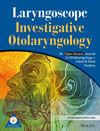Current approaches to facial nerve schwannoma surgery
Abstract
Background
Facial nerve schwannomas (FNSs) are exceedingly rare benign tumors. This study aims to report on a series of excised FNSs, providing clinical information and details on their surgical management, including novel approaches.
Methods
We retrospectively reviewed patients who underwent surgical excision of FNSs in a private otology clinic and public tertiary referral center. The main outcome measures were facial nerve function, complete tumor removal, postoperative complications, tumor recurrence, and hearing.
Results
Seventeen patients (10 men and 7 women) with a mean age of 44.23 years (SD, 12.21) underwent surgery during the study period. The most common symptom was facial nerve dysfunction (58.8%). Facial and otoneurologic symptoms (hearing loss, tinnitus, and vertigo) were observed in 88.8% and 77.7% of patients, respectively. The middle cranial fossa (MCF) was the most common approach (six patients, 35.2%), followed by translabyrinthine (TL), transmastoid (TM), and combined TM-MCF (three patients, 17.6% each). Exclusive endoscopic transcanal suprageniculate (ETS) and mastoid combined with cervical approaches were applied once in two patients, 5.8% each. Total tumor removal was achieved in all cases. No significant postoperative complications were observed. The mean follow-up period was 193.2 months (SD, 119.5) and no tumor recurrence was observed.
Conclusion
This study provides further evidence for the safety and efficacy of various surgical approaches for FNS, and incorporates the endoscopic transcanal approach.
Level of evidence
4.


 求助内容:
求助内容: 应助结果提醒方式:
应助结果提醒方式:


